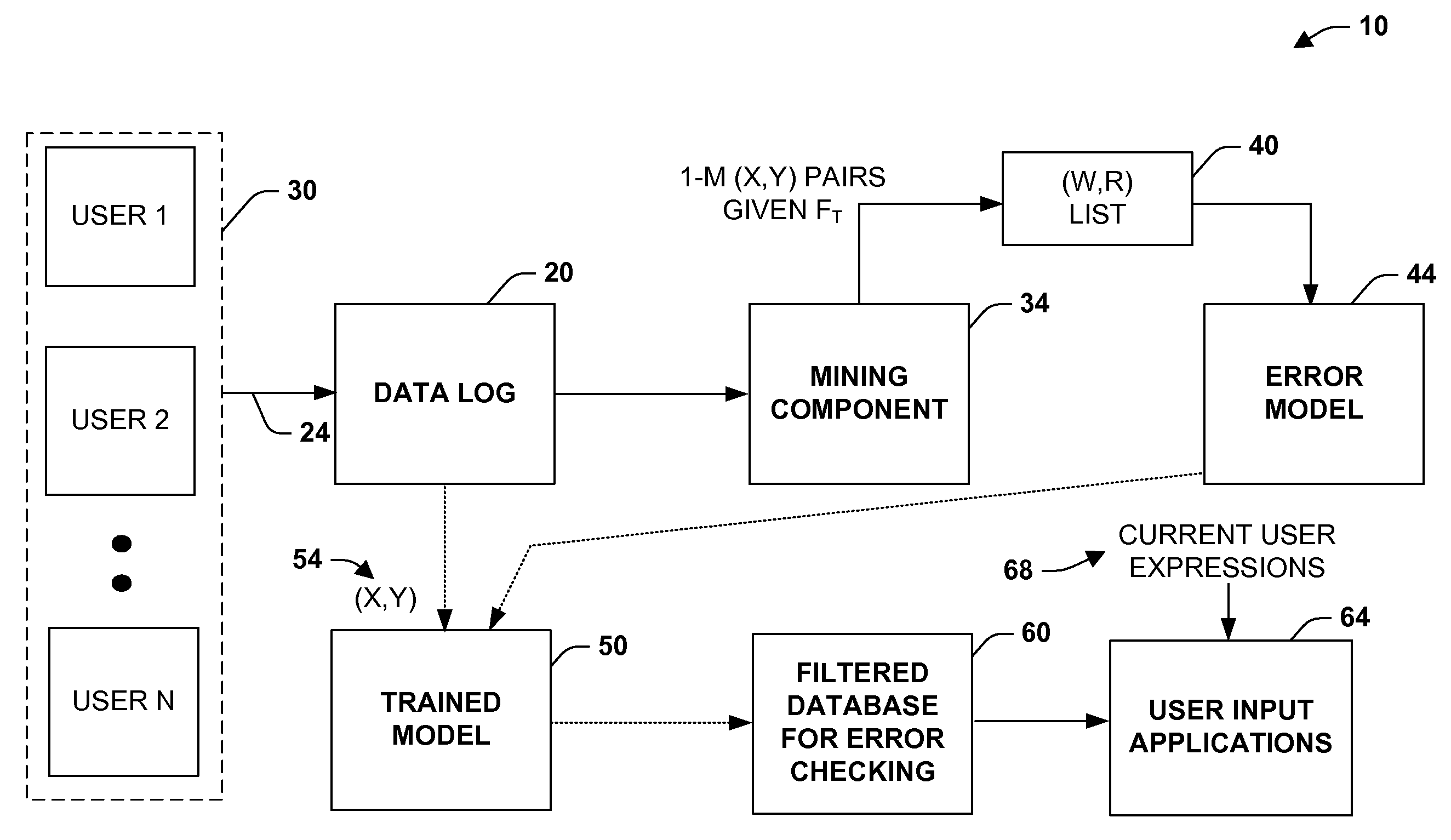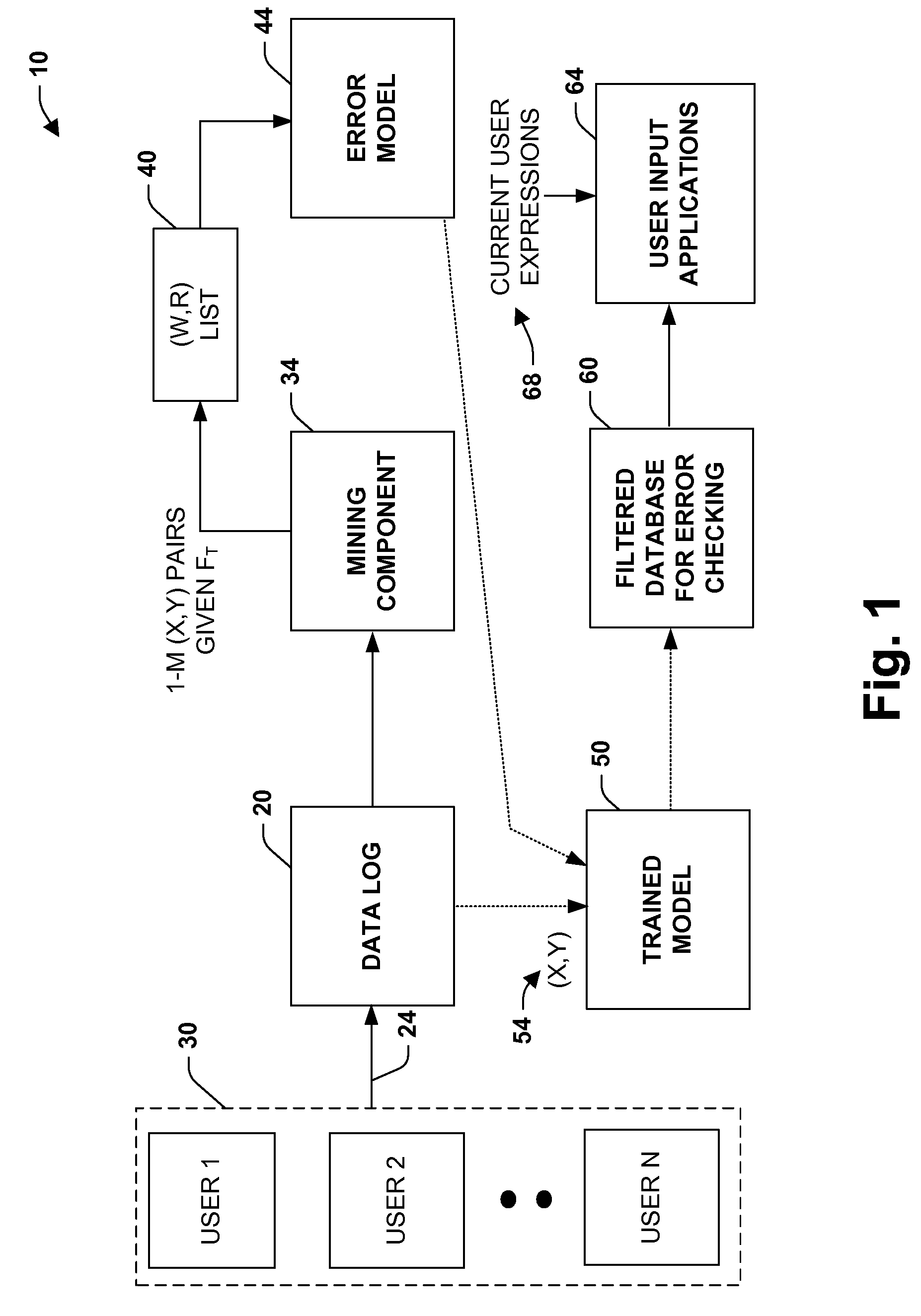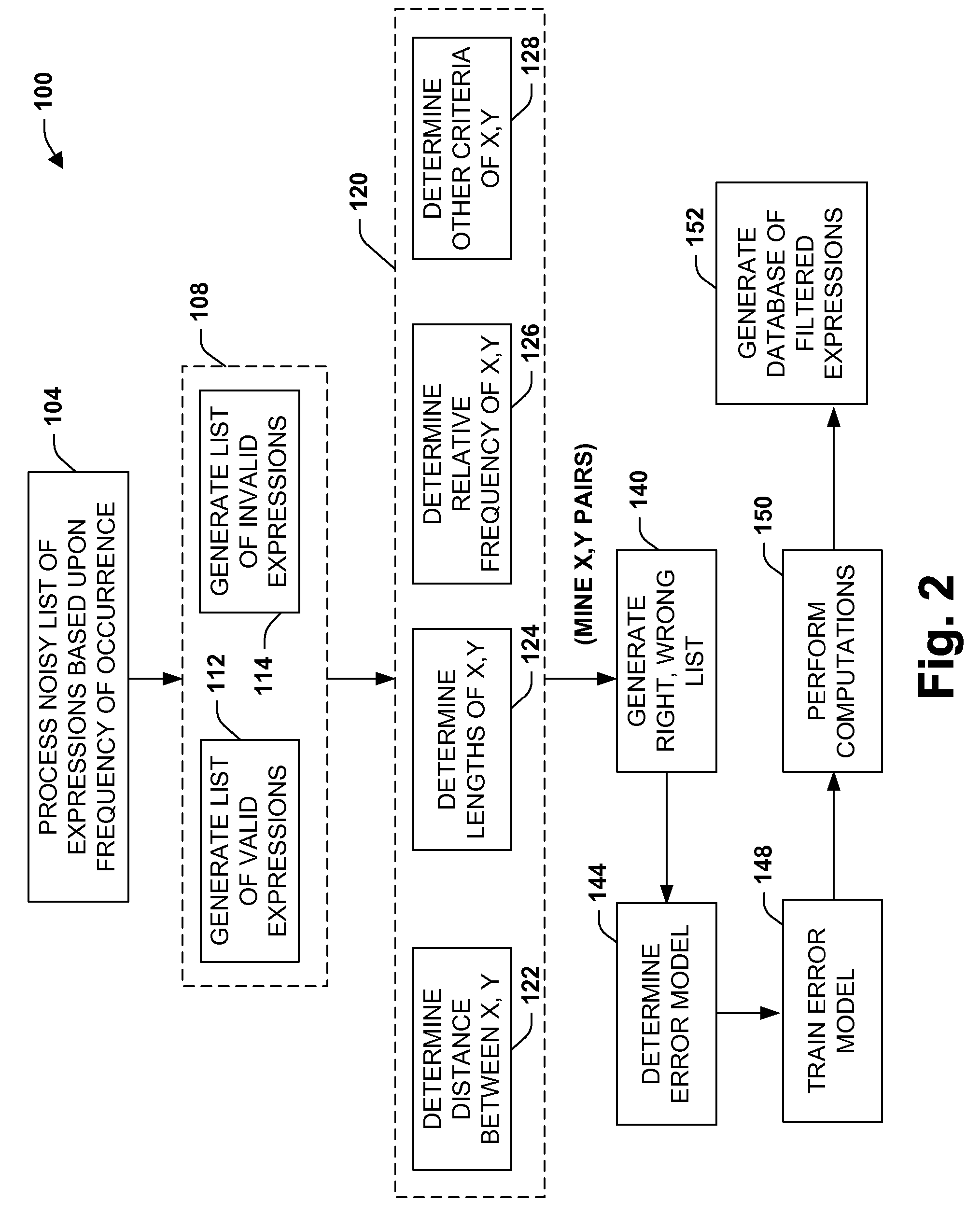Automated error checking system and method
a technology of automatic error correction and error correction, applied in the field of computer systems, can solve the problems of incorrect input of words in queries, high cost of re-navigate time, and standard dictionary, and achieve the effect of facilitating automated error correction and user input data correction
- Summary
- Abstract
- Description
- Claims
- Application Information
AI Technical Summary
Benefits of technology
Problems solved by technology
Method used
Image
Examples
Embodiment Construction
[0020] The present invention relates to a system and methodology to facilitate error checking in accordance with a plurality of various user input applications (e.g., correcting input from a query string, from audio phrases, from symbolic expressions). Error checking is achieved by creating a filtered database from past user input activities and applying the database to facilitate error checking in accordance with present user input activities. Systems and methods are provided to automatically create the filtered database from query logs (or other database), for example, by automatically detecting and pruning out errors in the query logs. Given a type-in line for a particular application, the filtered database provides a lexicon or data subset that can be employed to spell or error check a user's input such as from text, for example. The lexicon or subset can be derived empirically from the logs of what people are actually typing into a type-in line, for example. Given a log of stri...
PUM
 Login to View More
Login to View More Abstract
Description
Claims
Application Information
 Login to View More
Login to View More - R&D
- Intellectual Property
- Life Sciences
- Materials
- Tech Scout
- Unparalleled Data Quality
- Higher Quality Content
- 60% Fewer Hallucinations
Browse by: Latest US Patents, China's latest patents, Technical Efficacy Thesaurus, Application Domain, Technology Topic, Popular Technical Reports.
© 2025 PatSnap. All rights reserved.Legal|Privacy policy|Modern Slavery Act Transparency Statement|Sitemap|About US| Contact US: help@patsnap.com



